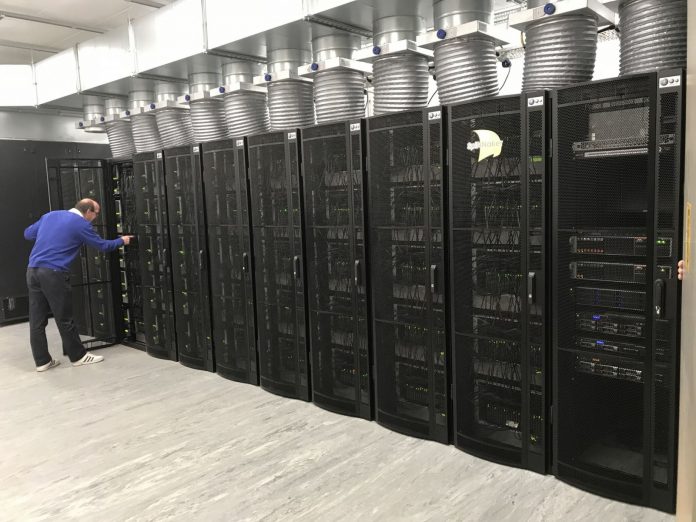The world’s largest neuromorphic supercomputer designed and built to work in the same way a human brain does has been fitted with its landmark one-millionth processor core and is being switched on for the first time.
The newly formed million-processor-core ‘Spiking Neural Network Architecture’ or ‘SpiNNaker’ machine is capable of completing more than 200 million million actions per second, with each of its chips having 100 million moving parts.
To reach this point it has taken £15million in funding, 20 years in conception and over 10 years in construction, with the initial build starting way back in 2006. The project was initially funded by the EPSRC and is now supported by the European Human Brain Project. It is being switched on for the first time on Friday, 2 November.
The SpiNNaker machine, which was designed and built in The University of Manchester’s School of Computer Science, can model more biological neurons in real time than any other machine on the planet.
Biological neurons are basic brain cells present in the nervous system that communicate primarily by emitting ‘spikes’ of pure electro-chemical energy. Neuromorphic computing uses large scale computer systems containing electronic circuits to mimic these spikes in a machine.
SpiNNaker is unique because, unlike traditional computers, it doesn’t communicate by sending large amounts of information from point A to B via a standard network. Instead it mimics the massively parallel communication architecture of the brain, sending billions of small amounts of information simultaneously to thousands of different destinations.
Steve Furber, Professor of Computer Engineering, who conceived the initial idea for such a computer, said: “SpiNNaker completely re-thinks the way conventional computers work. We’ve essentially created a machine that works more like a brain than a traditional computer, which is extremely exciting.
“The ultimate objective for the project has always been a million cores in a single computer for real time brain modelling applications, and we have now achieved it, which is fantastic.”







